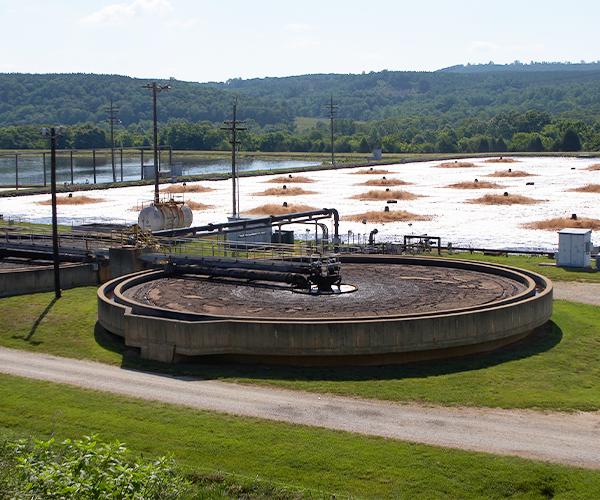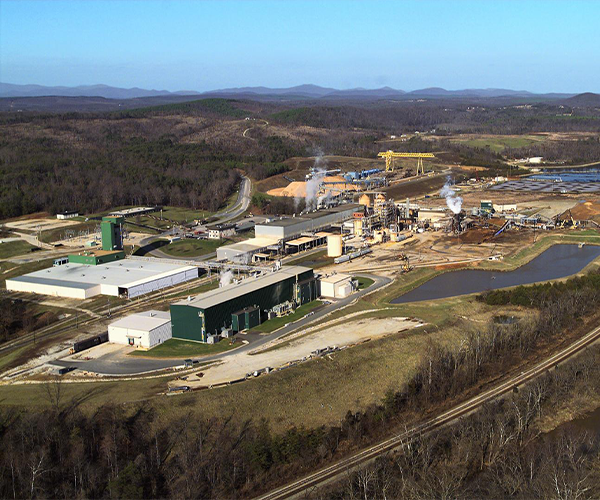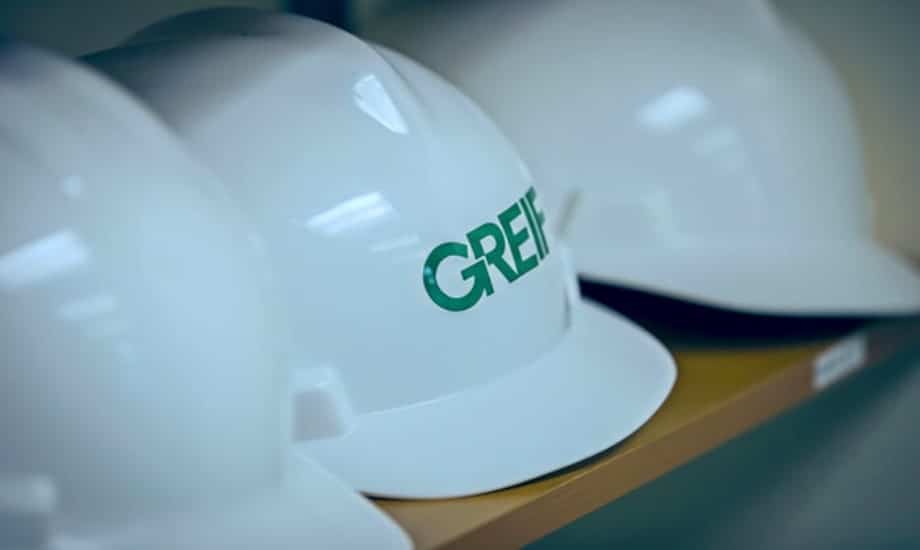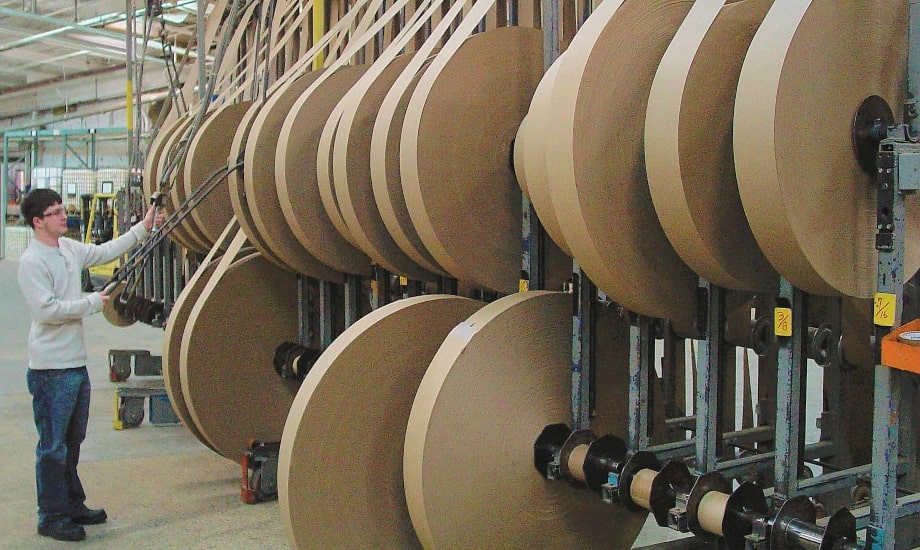- Про нашу компанію
- Про наш звіт
- Стратегії сталого розвитку
- Цілі та продуктивність
- Індекси звітності ESG
- Завантаження звітів
Основні моменти
- Water is a critical resource, and Greif pledges to protect it for the benefit of future generations and the well-being of the communities where we live and operate. Through our commitment to increasing water quality, we treat water discharged from our facilities, so it is healthy and safe for wildlife and our communities.
- Our water management efforts focus on water use reduction in our Paper Packaging and Services business and stormwater management in our Global Industrial Packaging business.
- We continue standardizing environmental data dashboards across our mills to better understand and manage water, effluent and energy data to identify efficiency opportunities.
- In 2022, we withdrew 13,365 thousand cubic meters and discharged 12,416 thousand cubic meters of water, similar to our performance each year between 2019-2021.
Чому вода має значення
Управління
наш Environmental Health and Safety (EHS) Policy guides our global water conservation and efficiency approach. We uphold our EHS policy managing water use at each Greif facility. We utilize our EHS team to support regulatory compliance and implement best practices regarding water use, treatment and recycling. Our centralized environmental structure oversees our compliance management system and provides any necessary support. Greif encourages and empowers local management teams to improve water efficiencies and quality, reduce water withdrawal to minimize the impact on local sources, maintain regulatory compliance and reduce water-related costs. We also continue to manage water discharge in compliance with individually allocated water permits.
Approximately 95 percent of our water use occurs in 14 paperboard mills within our Paper Packaging and Services (PPS) business. Consequently, we strive to use reclaimed water whenever possible in paper production, and our water management efforts primarily focus on our PPS mills to achieve the most significant potential impact.

Water Reduction Study
Greif contracted a third-party consultant to perform a high-level evaluation documenting water usage at all the paperboard mills operated by Greif. The analysis considered inflows, major water usage within the production facilities and outflows. Since Greif is already operating with a high degree of internal water reuse, remaining opportunities to increase water reuse can be found by examining the flows of wastewater discharged from the facilities. The study observed that the potential water use reduction goals could be achieved by focusing on the largest water user in the portfolio, the Riverville mill. We are now evaluating water reduction projects for the Riverville mill for FY23.
Due to our Global Industrial Packaging (GIP) facilities’ low water usage, we prioritize good stormwater practices rather than water use reduction in GIP. These facilities conduct frequent stormwater sampling and testing to ensure safe limits and find improvement opportunities. At Greif, we provide all applicable colleagues with annual training on Greif’s stormwater practices and compliance activities to support responsible water management. We also implement localized stormwater pollution prevention plans and spill prevention controls at relevant facilities and have a global contingency plan and emergency procedure to avoid, reduce and mitigate any spill occurrences. We continuously update stormwater training, utilizing third-party consultants where necessary. In 2022, we updated training at all facilities covered by a stormwater permit.
Greif’s water impacts are most significant within our PPS operations. However, it is still essential to responsibly manage water use across all our operations, particularly in water-stressed regions, including Latin America, Africa and the Middle East. To mitigate the negative impacts in these facilities, we reduce water pressure where it is higher than needed, replace leaky valves, recycle water, install touchless faucets and collect and use rainwater. Greif ensures that all facilities operate within their water permits.

Paper Packaging & Services Water Reduction and Quality Projects
Specific examples of water reduction and quality projects recently undertaken at PPS facilities include:
- У 2021 році ми продовжували інвестувати в наші зусилля з усунення прямих скидів із наших млинів, переобладнавши наш завод у Балтіморі, штат Огайо, для скидання на місцеві муніципальні очисні споруди. Окрім усунення прямих скидів з наших операцій, цей перехід зменшує загальний відбір води Greif на 400 000 галонів на день.
- На нашому заводі у Фітчбурзі ми інвестували приблизно $500 000 у встановлення обладнання, призначеного для вилучення завислих твердих частинок повітря та зменшення біохімічної потреби в кисні (БПК) і хімічної потреби в кисні (ХПК). Цей процес дав нам змогу покращити якість води та повітря та зменшити витрати.
- На нашому заводі в Лос-Анджелесі ми встановили невеликий відстійник HydroFlo Technologies Dissolved Air Flotation (DAF), Hydrofloat, щоб зменшити кількість твердих речовин у стічних водах і зменшити витрати на установку. Hydrofloat переробляє приблизно 10 000 галонів води на день.
- Ближче до кінця 2021 фінансового року наш завод у Фітчбурзі, штат Массачусетс, встановив і запустив значно більший DAF. Цей DAF Evoqua Water Technologies має площу понад 100 квадратних футів і здатний обробляти до 300 000 галонів на день. Завдяки обробці всіх стічних вод заводу Фітчбург цей DAF зменшить завислі тверді речовини (TSS) у нашому скиданні на 80% і дозволить підприємству в майбутньому суворіше ліміт скиду.
Цілі, прогрес і ефективність
83%
Average Recycled Water
Intake at Mills
Ціль на 2025 рік:
- Знизити біохімічну потребу в кисні (БПК), що викидається в кілограмах, на 10 відсотків на метричну тонну продукції на заводах Riverville і Massillon, використовуючи базовий рівень 2014 року до кінця 25 фінансового року.
To date, we have reduced the BOD by 76% from our 2014 target baseline.
In 2022, we retained a third-party consultant to evaluate our paperboard mill water use. The study created water models for each of our 14 mills and found additional opportunities for water reduction. From this study, we discovered that each mill’s intake consists of 83 percent recycled water on average. According to the models, our best opportunity to meet our water use reduction goal is prioritizing water reductions at our largest water user, the Riverville mill. In 2023, we will explore potential water reuse and reduction projects at this facility.
Greif tracks water usage and wastewater treatment using Key Performance Indicators (KPIs). We continue standardizing environmental data dashboards across our mills to better understand and manage water, effluents and energy data and identify water efficiency opportunities. These KPIs allow us to monitor our progress on our goals constantly.
Практика циркулярної економіки
На заводі Greif's Austell у Джорджії ми розпочали проект зневоднення залишків стічних вод, щоб перетворити відходи на біопаливо. Практика циклічної економіки змітає загуслі тверді речовини з плаваючого шару осаду на прес для зневоднення. Текучі тверді речовини зневоднюються, доки їх не можна транспортувати до місця для сушіння на повітрі, змішувати з іншими матеріалами та споживати як додаткове паливо для котлів. Цей процес не тільки дозволяє перепрофілювати матеріали, щоб отримати найбільшу користь від початку до кінця, але також заощаджує плату за утилізацію сміттєзвалища.

Зменшення води в нашій Флоренції, штат Кентуккі Мілл
Наприкінці 2019 року завод Greif у Флоренції, штат Кентуккі, встановив очисні споруди, щоб зменшити кількість небезпечних відходів і переробити воду назад у місто. Процес працює шляхом введення води в систему, видалення близько 100% забруднюючих речовин з процесу фарбування та відправлення очищеної води на місцеву очисну станцію. Потім вода переробляється очисними спорудами для перерозподілу серед громади. Матеріал, що залишився після процесу, утилізується у смітник замість небезпечних відходів. Оскільки обладнання повністю запрацювало в середині 2020 року, процес не тільки значно зменшив кількість небезпечних відходів, які утворюються на об’єкті, але й знизив вартість відходів на $40 000 на місяць.




